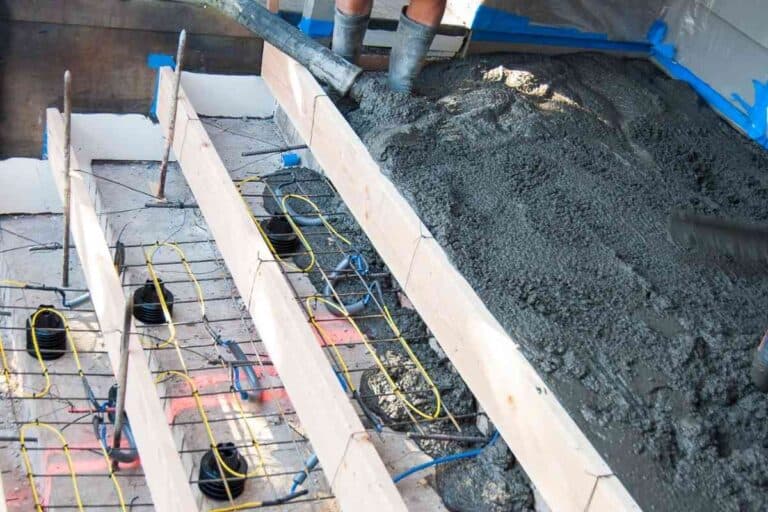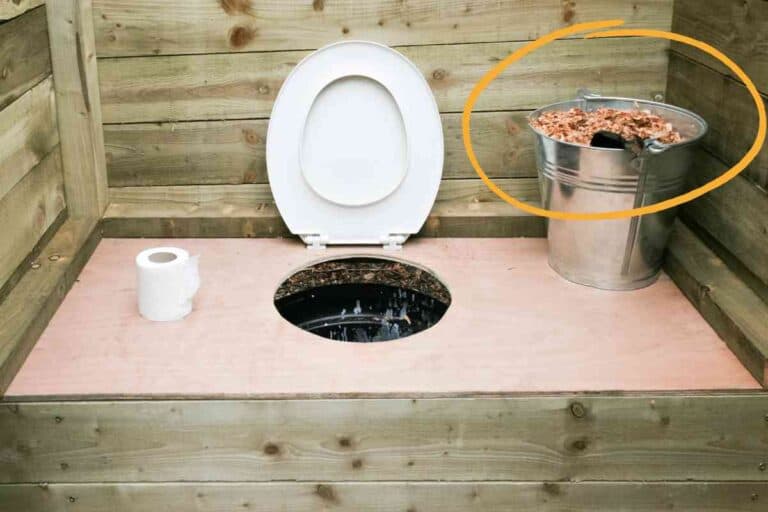How To Tell When To Sharpen Your Chainsaw
Your chainsaw’s sharpness will reduce over time, even with proper use. But how often should you sharpen a chainsaw?
How often do you need to sharpen a chainsaw?
There’s no fixed interval regarding when to sharpen your chainsaw. How often to do it will depend on the quality of the chain, the frequency of use, and the type of wood that you use your chainsaw to cut. But if you are a heavy user, then you should sharpen it every time you refuel.
Just like the other tools that you own, your chainsaw will need proper and regular maintenance. And part of the maintenance work that you will need to undertake on your chainsaw is sharpening it.
Sharpening your chainsaw will enable it to perform effectively and smoothly. As a result, you will spend less money on gas. Also, when your chainsaw is sharp, you will use lesser energy to cut through wood.
Furthermore, a sharp chainsaw will exert lesser strain on the motor, thus helping to extend the life of your chainsaw. Besides, you will also end up with cleaner cuts when your chainsaw is sharp, compared to a dull one.
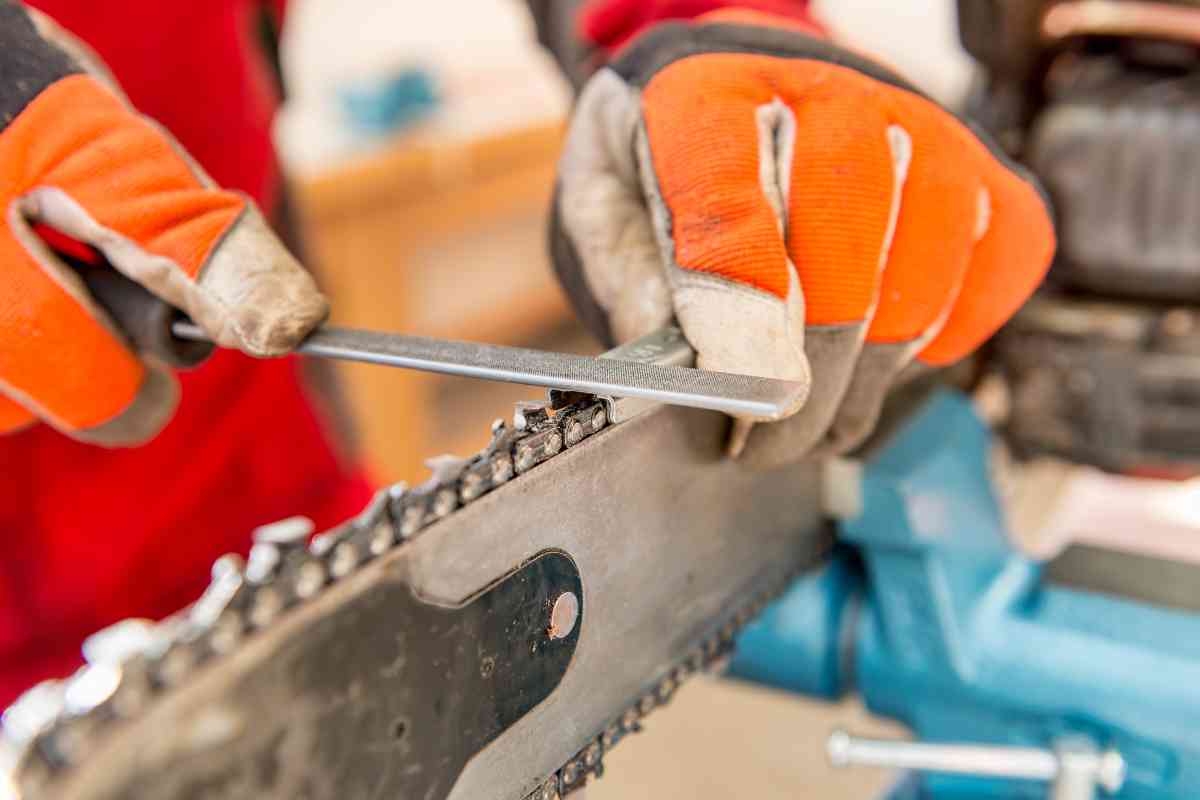
How Often to Sharpen a Chainsaw
As you may expect, the sharpness of your chainsaw will diminish gradually, even if you are not cutting objects like soil, rocks, ice, metal, or other similar materials, which may reduce its sharpness.
And as we mentioned earlier, a sharp chainsaw will cut smoothly and more efficiently.
Also, a sharp chainsaw is safer to use compared to a dull one. And this brings us to the question, how often does your chainsaw require sharpening?
Well, there’s no set interval as to when to sharpen it.
Instead, the frequency will depend on various factors such as how often you use your device, the quality of the chainsaw that you have on the chainsaw as well as the type of wood that you usually cut with your chainsaw.
For instance, if you are a lumberjack, then you will need to be sharpening your chainsaw more frequently compared to someone that only uses theirs once in a while.
The more you use your chainsaw, the faster it will lose its sharpness.
Also, if you frequently cut through hardwoods, there’s a high possibility your chainsaw will lose its sharpness faster compared to someone who mainly deals with softwoods. Consequently, you should be sharpening it more frequently.
The quality of your chainsaw will also determine how often you should sharpen it. As you may expect, a low-quality chainsaw will become dull after only using it for a short period, compared to a high-quality chainsaw.
So, low-quality chainsaws need sharpening more often as opposed to high-quality chainsaws.
However, as much as there isn’t any predetermined interval as to when you need to be sharpening a chainsaw, there are some tell-tale signs and signals that your chainsaw requires sharpening.
Here are four signs that your saw needs sharpening.
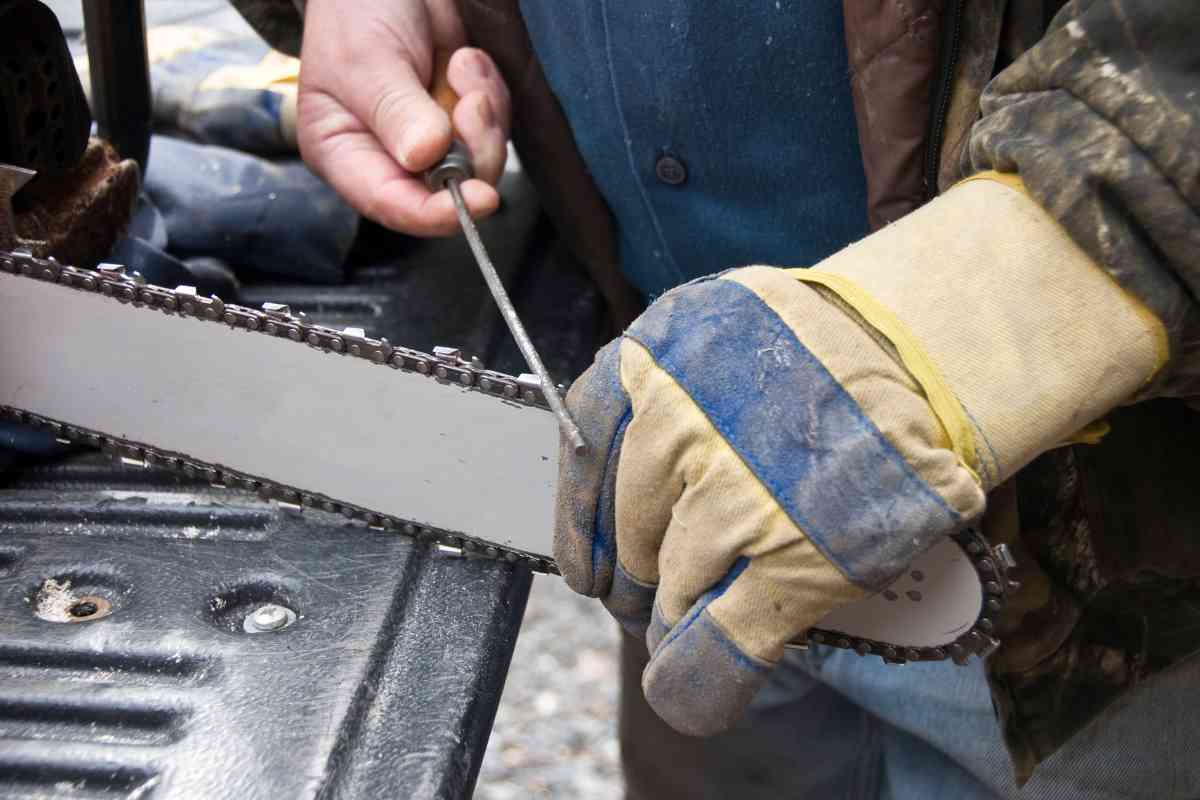
Sawdust
When your chainsaw is sharp, it will produce coarse sawdust or large chips of sawdust whenever you are felling trees or cutting through wood.
So, if it’s instead producing fine sawdust and not large chunks, then it’s a sign that it’s dull.
Ease of Cutting
Generally, you don’t have to use too much force when you are cutting through the wood using a chainsaw.
Therefore, if you find yourself having to use too much force or you have to lean on the sawdust more than usual when you are cutting through wood, then that’s a sign that the chainsaw is dull.
Smoke
Another sign to watch out for is the amount of smoke that your chainsaw is producing.
If you notice your chainsaw is producing too much smoke despite having oiled and lubricated it, then it’s a sign that it needs to be sharpened.
If the chainsaw is dull, it will be forced to overwork or compensate for the dullness.
But, we should also point out that your chainsaw may also be smoking due to other reasons. Some of the other reasons why your chainsaw may be smoking include a dirty air filter, too much oil in the gasoline-oil mixture, inadequate lubrication and a tight chain.
If it’s none of these, then your chainsaw probably needs some sharpening.
Uniformity of Cuts
You can also tell whether your chainsaw needs sharpening or not by the uniformity of the cuts it’s making. If it’s making or producing even cuts, then that’s a sign that its teeth are dull.
However, your chainsaw will also make uneven cuts if some teeth are missing.
So, it will be advisable to inspect it physically before you conclude that the uneven cuts are due to its dullness.
Fuel Consumption
If you have been using your chainsaw for a while, then you already have an idea of its average fuel consumption.
To this end, if you notice that it’s consuming more fuel than usual, then it may be a sign that it needs sharpening.
When your chainsaw is dull, it will be forced to work harder to cut through wood. As a result, it will end up consuming more fuel than usual.
How to Sharpen a Chainsaw: Tips and Tricks

A sharp chainsaw is more efficient and easier to use. Also, it’s safer to use. Besides, it won’t consume too much fuel.
Fortunately, sharpening a chainsaw is not a complicated process. And you don’t need complicated tools or any special skills to sharpen one.
There are two methods that you can use to sharpen a chainsaw. First, you can sharpen it using an electric sharpener. If you use your chainsaw frequently, then you should consider investing in this device.
You also have the option of sharpening the saw manually using a chainsaw file. In this guide, we will take you through how to sharpen a chainsaw manually.
Here are the steps that you will follow when sharpening a chainsaw.
Stabilize the Chainsaw/Inspect
Before you begin the sharpening process, you should ensure you are wearing protective gear. Ideally, you should be wearing leather gloves and some form of eye protection.
From there, you should proceed to stabilize the chainsaw. You will only manage to sharpen the chainsaw properly if it’s stable.
To this end, you will first need to place your chainsaw on a flat surface.
You also need to secure it on the surface using a stump vise. In case you don’t have a stump vise, you can instead ask someone to hold the tool steady as you file the teeth.
Clean the Chain
After you’ve stabilized the chainsaw, you should proceed to clean the chain. You can clean it using a commercial degreasing agent, together with an old towel.
Cleaning the chain before you begin the process will prevent the build-up of the metal fillings on the chain as you sharpen the saw.
You should then proceed to inspect the chain after you’ve finished cleaning it. Check if there are any missing or damaged teeth.
If there are missing or damaged teeth, you will need to repair them. However, if there are too many damaged teeth or there are a couple of missing teeth, it will be advisable to replace the chain instead.
File the Teeth
After you’ve finished carrying out the necessary repairs, you can now begin filing the teeth using a round file.
Ideally, you should start with the leading cutter or the shortest cutter on one side of the chain.
But, if all the teeth on the chain are of the same size, then you can just start filing any. You just need to ensure you’ve marked the starting point using a marker, pencil, nail polish or any visible marker.
After filing all the teeth on one side, you should then turn your chainsaw over and file all the teeth on the other side.
All the cutters should be of the same length by the time you finish sharpening the saw.
When to Replace Your Chainsaw Chain
At some point, you will need to replace your chainsaw chain.
But when should you replace it? Well, a high-quality chainsaw can last for five years or even more before it needs to be replaced – even with heavy, frequent use.
And if you only use it occasionally, then it can go for 10 years or even more before you need to replace it.
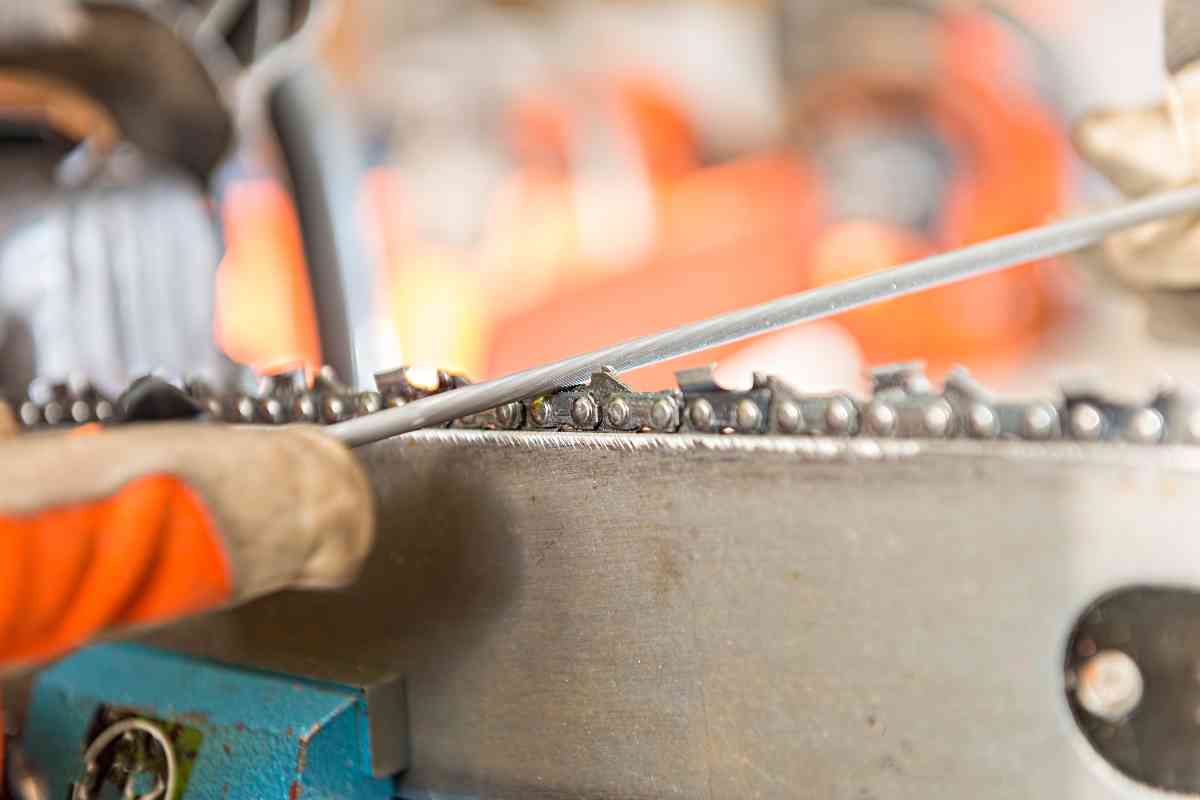
Key Takeaways
- You need to sharpen your chainsaw to ensure safe and efficient use
- How often to sharpen a saw will mainly depend on the usage
- There are some signs to watch out for to tell whether to sharpen the chainsaw
- Sharpening a chainsaw is not a complicated process

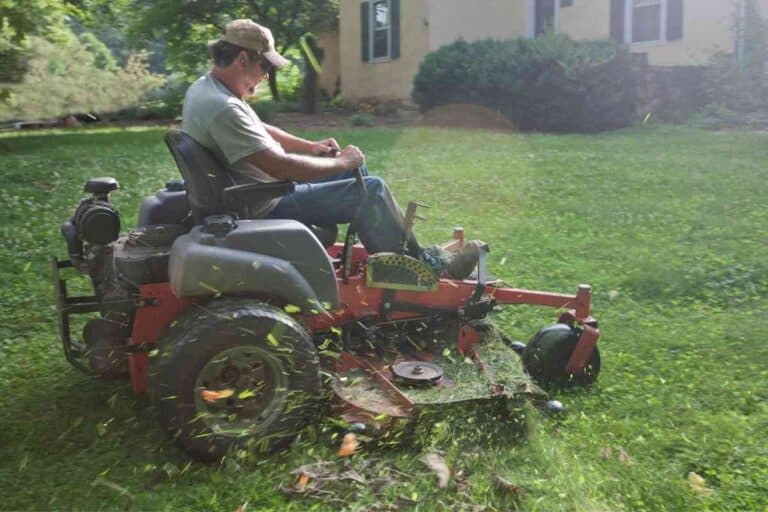
![Are Log Cabins High Maintenance? [Tips For A Long Life!]](https://freedomresidence.com/wp-content/uploads/2022/05/Are-Log-Cabins-High-Maintenance-1-768x512.jpg)

